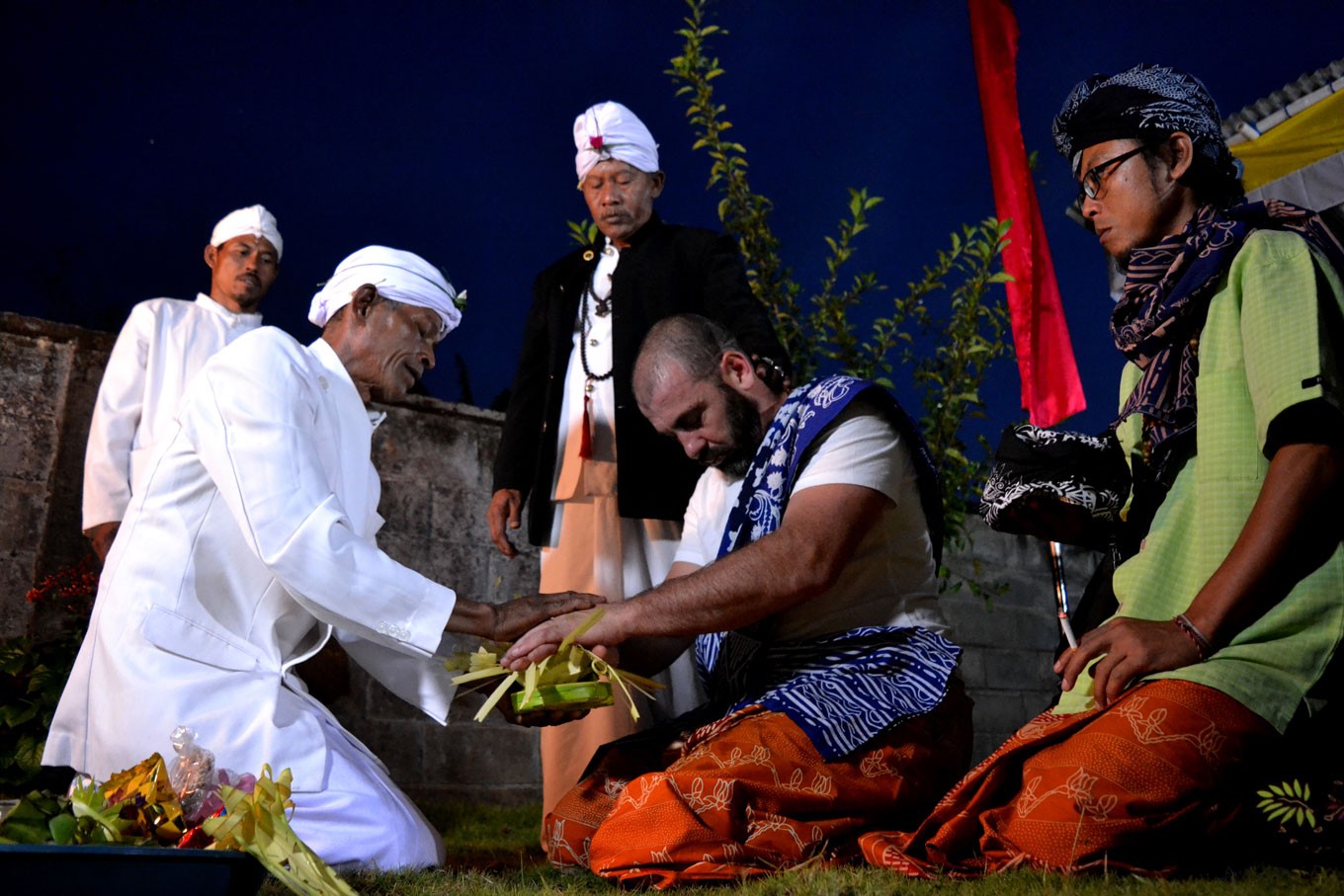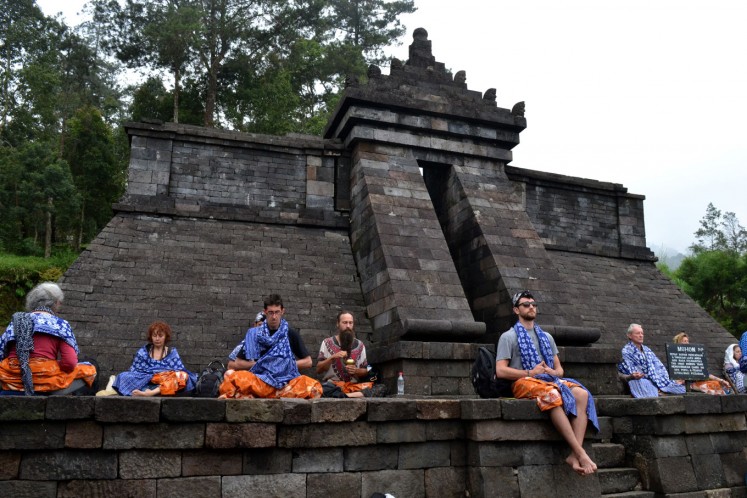Popular Reads
Top Results
Can't find what you're looking for?
View all search resultsPopular Reads
Top Results
Can't find what you're looking for?
View all search resultsMount Lawu growing as destination for spiritual tourism
The Hindu community in Central Java's Mount Lawu area is welcoming more and more foreign visitors who are keen on learning about Javanese spiritualism.
Change text size
Gift Premium Articles
to Anyone
T
he Hindu community in the Mount Lawu area in Karanganyar, Central Java, was getting ready to perform the Odalan ceremony, commemorating the establishment of Lingga Bhuana Mahendra Agung Temple on June 28.
The event usually draws residents from the surrounding Mt. Lawu region, including those from the neighboring Anggrasmanis area, such as Sedondong, Demping, Nringin, Babar and Tempel.
Several of those that came this year traveled from even farther lands, as foreign visitors were also among who participated, including Frenchmen Jay Bronson and Pako Echarri, who were staying in Demping hamlet to study Javanese spiritualism.
Following the Odalan ceremony, Bronson also participated in the Ruwatan (purification) ritual, which was led by Mangku Marto Suwarno, a leader at Lingga Bhuana Mahendra Agung Temple.
For three days, Bronson and Echarri stayed at the house of Jero Mangku Jito, a Javanese Hindu leader in Demping, not far from the temple. For Bronson, it was his second visit, following a previous one in April, traveling with 15 colleagues to stay at the village.
"This is my second visit to Demping, yet it still never ceases to amaze me. The people live a simple life, yet so calm and peaceful," Bronson said.
Read also: 'Ngembak Geni' marks beginning of Hindu's New Year
The nature's beauty, local culture and life at Lereng Lawu (the slopes of Mt. Lawu) were among the things that attracted spiritualism enthusiasts from overseas to come, learn and experience the rich culture from the people at Demping.
"At the start, there were only a few foreigners visiting Demping hamlet. It has become more often within the past year. Sometimes within a month there would be two to three group visits of foreigners who want to experience spiritual tourism," said Endro Ristanto, a local youth who helps organize the visits.
The village had not particularly promoted itself as a destination for spiritual tourism, as visitors would usually learn of the information from posts on social media from those who had visited.
Endro said the village residents had not made any special preparations to welcome the foreign guests. The foreign tourists would stay at local residents' homes, where they would eat homemade local cuisine, such as corn rice, urap sayur (vegetable salad with grated coconut), sayur asem (vegetables in tamarind soup), sambel rawit (bird's eye chili sambal), ikan asin (salted fish), fried cassava and other snacks.
The visitors are welcome to participate in the local ceremonies, including worshiping and palukatan (meditation with water), as well as to visit the surrounding areas, such as a water spring that the locals hold as sacred. Not far from the village are also several historical structures, such as Kethek Temple and Cetho Temple, which date back to the Majapahit Era.
Foreign visitors studying Javanese spiritualism meditate at Cetho Temple in Central Java. (JP/Stefanus Ajie)With the help of translators, the village elders are able to communicate the moral values upheld by the residents to the visitors, who have come from other European countries, such as Germany, Belgium and Finland, to study Javanese spiritualism. (liz/mut)








